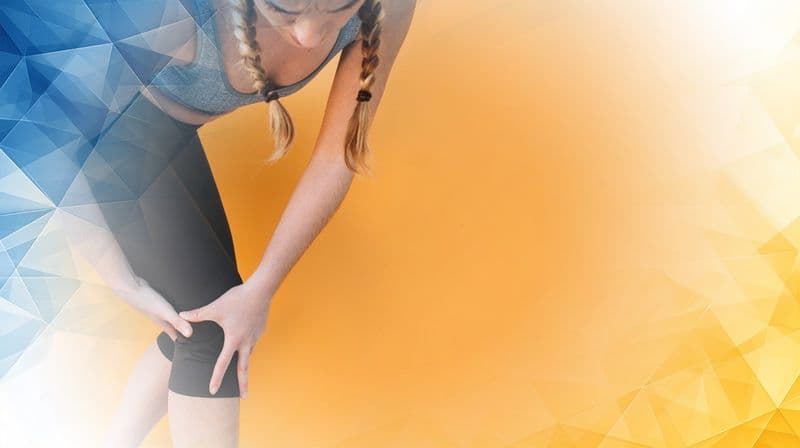
If It’s Not Stitched In, How Does ChondroFiller Stay in Place?
Repairing damaged cartilage in joints like the knee or ankle can be challenging. Thankfully, a new approach called ChondroFiller Liquid is offering fresh hope. This innovative, cell-free collagen scaffold forms a gel that “sticks naturally” to the defect, with no need for stitches. But if ChondroFiller isn’t sewn in, how does it stay in place—and work so effectively? Let’s explore the simple, smart science behind how ChondroFiller helps repair cartilage and why it’s an exciting alternative to traditional treatments.
The Challenge of Repairing Cartilage
Cartilage defects—where the joint’s smooth surface is damaged—are especially common in the knees and ankles. These injuries can get worse over time, leading to pain and reduced movement. Traditional repairs, such as microfracture surgery or sutured tissue flaps, often require multiple procedures and may result in the growth of fibrous scar tissue instead of healthy, strong cartilage.
These two-step surgeries tend to increase recovery times and bring higher risks of complications. That’s why simpler, one-step treatments using cell-free scaffolds like ChondroFiller are drawing attention. These materials can be shaped right in the joint and offer a practical, promising way to fill cartilage defects more effectively.
Recent clinical experience supports this, with evidence showing that similar scaffold techniques are safe and yield good results—even in challenging cases like larger hip cartilage defects.
How Does ChondroFiller Stay in Place?
Here’s what happens when ChondroFiller is used: The liquid gel is gently warmed, then injected into a dry, carefully prepared cartilage defect. Within minutes, it transitions from a liquid to a semi-solid collagen gel—the same protein that naturally builds cartilage.
This new gel forms a close bond with the surrounding healthy cartilage, naturally sticking in place without stitches or adhesive. Most importantly, once it sets, the gel is mechanically stable even as the joint moves, which is crucial given the pressures and movement in knees and ankles. This stability helps the scaffold stay exactly where it’s needed, providing a reliable platform for the body to start repairing itself.
Imaging studies have confirmed that new tissue forms well, and clinical results show better function and tissue quality following ChondroFiller treatment.
Supporting Cell Growth and Cartilage Regeneration
Once set, ChondroFiller becomes a “home” where the body’s repair cells can settle and grow. Over time, stem cells from the underlying bone and nearby cartilage migrate into the scaffold. Lab and animal studies indicate that these cells develop into chondrocytes (the specialized cells that make up cartilage), producing key elements like proteoglycans, which help cartilage stay strong and flexible.
This process encourages the growth of hyaline-like cartilage, which closely resembles the original joint surface, rather than weaker scar tissue. Because ChondroFiller molds perfectly to the defect’s shape, the new cartilage grows in the right place and with the right structure to restore healthy joint movement .
Clinical results with similar scaffolds are encouraging, with high levels of patient improvement and many returning to sports and daily activities shortly after treatment.
What Does Clinical Evidence Tell Us?
Clinical studies further back up these promising findings. In one study of 64 patients with cartilage defects, researchers observed significant improvements in knee function and quality of life over periods of 6, 12, and 36 months. About 80% of patients reported being satisfied or very satisfied with the procedure.
Another controlled study comparing ChondroFiller to the microfracture technique found that patients treated with ChondroFiller recovered faster, with better knee function in the first few months. A separate retrospective study in 2016 looked at smaller defects and found no complications and good functional outcomes overall. While more long-term research is needed, current results suggest ChondroFiller is a safe and effective new option for certain cartilage injuries.
Importantly, these procedures have a strong safety profile, with no significant adverse events reported and high rates of patient satisfaction, including among those eager to return to sports.
The Importance of Expert Care
Effective cartilage repair is not just about the scaffold—expert clinical care is equally essential. Professor Paul Lee, an experienced orthopaedic and rehabilitation specialist, highlights that treatment in a professional setting like MSK Doctors makes a big difference. Their multidisciplinary team ensures not only the correct surgical technique but also personalized rehabilitation plans for each patient.
Remember, ChondroFiller is one part of a complete treatment plan. Successful outcomes depend on a combination of advanced materials, expert medical care, and patient commitment to recovery.
Conclusion
So, how does ChondroFiller stay in place if it’s not stitched in? Thanks to its quick-forming gel and natural adhesion, ChondroFiller securely anchors itself within the cartilage defect, withstanding everyday joint movement —all without the need for stitches. This simple but clever approach gives the body a stable foundation to regrow healthy, hyaline-like cartilage right where it’s needed.
Early clinical studies show strong mid-term improvements in joint function and high patient satisfaction. While research continues, ChondroFiller is shaping up to be an impressive new option in cartilage repair . As always, for advice tailored to your unique situation, you should consult with a qualified healthcare professional.
This article presents a straightforward overview, based on current scientific research and clinical experience, of how ChondroFiller works and what patients can expect.
References
- Corain, M., Zanotti, F., Giardini, M., Gasperotti, L., Invernizzi, E., Biasi, V., & Lavagnolo, U. (2023). The use of an acellular collagen matrix ChondroFiller® Liquid for trapeziometacarpal osteoarthritis.
- Schneider, U. (2016). Controlled, randomized multicenter study to compare compatibility and safety of ChondroFiller liquid (cell free 2-component collagen gel) with microfracturing of patients with focal cartilage defects of the knee joint. Journal name, Volume(Issue), pages. https://doi.org/10.5348/VNP05-2016-1-OA-1
- De Lucas Villarrubi, J.C., Méndez Alonso, M.A., Sanz Pérez, M.I., Trell Lesmes, F., & Panadero Tapia, A. (2021). Acellular Matrix-Induced Chondrogenesis Technique Improves the Results of Chondral Lesions Associated With Femoroacetabular Impingement. Arthroscopy, . https://doi.org/10.1016/j.arthro.2021.08.022








